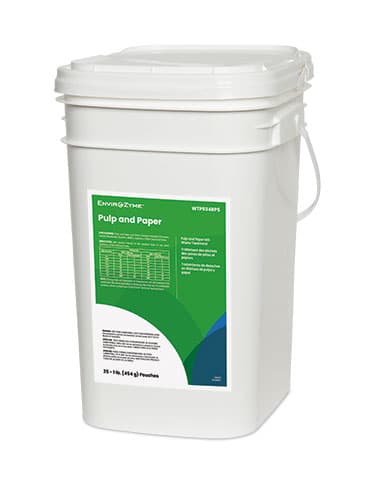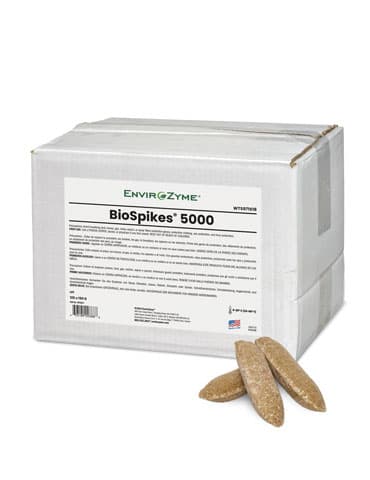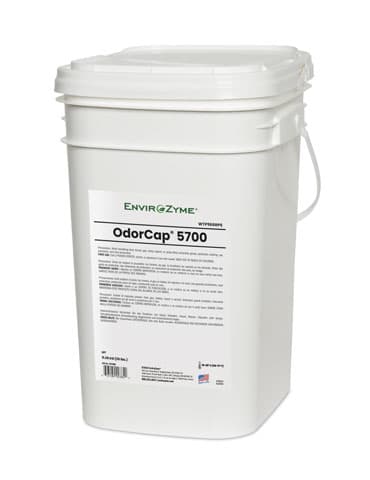Pulp & Paper
Water drives imperative functions of pulp and paper mills, which generate vast amounts of wastewater. EnviroZyme provides meticulously engineered solutions for this typically high-strength effluent with increased quantities of industry-specific pollutants from chemical and physical pulping processes to:
- Ensure effluent compliance with NPDES permits or other control mechanisms
- Control costs by eliminating surcharges for exceedances and streamlining operations
- Avoid unplanned wastewater related downtime without capital investment
- Strengthen community standing through sustainable water management via recycling loops and nuisance odor mitigation

Applications

General BOD & COD Control
Oxygen demand serves as the main benchmark for measuring organic pollution in effluent. EnviroZyme offers products and technical expertise to target a wide range of organics contributed by production activities upstream for:
- Compliance with tightening discharge limits and elimination of permit violations
- Enhanced plant stability for less frequent and less severe upsets
- Proper floc formation and improved settleability
- Improved performance in cold or variable weather and for mills' highly complex industrial effluent
Why Choose Us?

Mill Operations
Key Pollutant Indicators
With complex industrial processes, wastewater from pulp and paper mill operations is notoriously difficult to treat, including BOD/COD, adsorbable organic halides (AOX), color, and lignin.
Biological Influence
The strains of bacteria present during biological treatment influence decolorization, lignin depolymerization and removal, and organochlorine degradation.
Specialized Blends
With a large microbial portfolio, our blends are designed to be more effective than naturally occurring microbes, improving production of lignin-degrading enzymes and effluent quality.

Sustainable Water Management
Elevated Consumption
Pulp and paper is among the largest consumers of industrial process water, generating 30-60 million gallons daily. This mass quantity requires the industry to recycle generated wastewater.
Recycling Risks
Reusing water without proper treatment, however, leads to elevated levels of organic and inorganic matter that affect paper quality, increase corrosion, and intensify odors.
Reliable Reduction
Our treatment process innovations effectively improve wastewater quality and help reduce the high concentration of toxic pollutants. This results in higher-grade recycled water better suited for reuse.
Contact Us
Your focus should be on production – not your wastewater. Sign up today for a risk-free high-level facility assessment and receive recommendations tailored to your upstream processes for cleaner, compliant effluent, including:
- Bio-based products
- Process functions
- Equipment modifications
- Technical training
Product Selector Guide
Normal operations mean efficient, cost-effective and on-schedule progress. That is why we have created a product selector guide to help you troubleshoot disruptions, streamline the decision-making process, and ultimately get your plant back to normal faster.
Answer a few simple questions, and our product selector guide will pick the best product for your treatment challenge.
Resources

Assessing the 2 Most Important Factors in Today's Pulp and Paper Wastewater Treatment
The pulp and paper industries consume a remarkable amount of water, producing as many as 70 cubic meters of wastewater per metric ton of paper produced. This is due to the necessity of water in just about every process employed in pulp and paper mills, from pulp formation by digestion of wood chips to bleaching to steam generation for drying.

8 Must-Take Steps to Rectify Elevated Ammonia in Effluent
Permit effluent limits for ammonia are becoming more stringent, making its removal one of the most important and most difficult processes to maintain in water resource recovery.

Causes and Cures for 6 Common Types of Foaming in Water Resource Recovery
Foaming is a pervasive problem that can occur in aeration tanks, secondary clarifiers, and anaerobic digesters. The consequences of foaming range from inconvenient to downright dangerous, making it crucial to prevent or otherwise correct foaming as efficiently as possible.

Understanding the Impact of Filaments in Wastewater Treatment Plants
Filamentous bacteria grow in long thread-like strands in which cells do not separate from each other after cell division and grow in the form of filaments. Filaments can dominate in wastewater treatment systems, which has both advantages and disadvantages.

Need a Custom Solution?
EnviroZyme formulates and blends high-quality strains, as well as IP-owned microbes to deliver custom solutions for challenging effluent. We can match your wastewater’s composition to specific bacteria based on the enzymes they produce.
Continue Exploring
General Manufacturing

Technical Consulting




